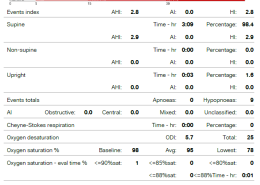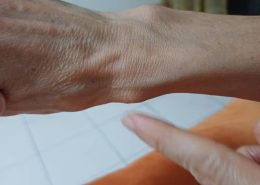Is post-concert depression real?
Based on your description of the incident and the symptoms you're experiencing, there are several possibilities to consider. While I cannot view images, I can guide you on the understanding and management of toe injuries, particularly focusing on the likelihood of a toe fracture. Clinical Overview WRead more
Based on your description of the incident and the symptoms you’re experiencing, there are several possibilities to consider. While I cannot view images, I can guide you on the understanding and management of toe injuries, particularly focusing on the likelihood of a toe fracture.
Clinical Overview
When you sustained a fall onto your toe, it could have resulted in various injuries, including a toe fracture or a soft tissue injury such as a sprain. The symptoms you describe—bruising, stiffness, and pain—are quite common following either injury. Here are some key considerations:
1. Toe Fracture:
– Given that you have some ability to move the toe and the pain intensity is moderate, this could potentially indicate a nondisplaced fracture, where the bone might have a minor crack but remains in alignment. Bruising is typical with bone injuries, as well as sprains.
– Important indicators of a fracture might include pinpoint tenderness directly over the bone, visible deformity, or when you experience shooting pain upon engaging in specific movements.
2. Soft Tissue Injury (Sprain):
– Sprains involve injury to the ligaments and might present similarly, but tend to allow more movement than a fracture would, assuming they are not severe.
Management and Recommendations
1. Rest and Protection:
– Avoid activities that stress the toe or exacerbate the pain. Give yourself a few days to rest and avoid unnecessary walking.
2. Ice and Elevation:
– Continue applying ice intermittently (15-20 minutes every hour) to reduce swelling.
– Elevate the foot to decrease swelling and provide relief against gravity-induced edema.
3. Pain Management:
– Over-the-counter NSAIDs (e.g., ibuprofen, naproxen) or acetaminophen can be taken to help manage pain and inflammation.
4. Protection:
– If available, use buddy taping to stabilize the toe by taping it to an adjacent toe with a soft cushion between them to prevent skin irritation.
– Consider wearing a stiff-soled shoe to minimize toe movement further and offer protection while walking.
When to Seek Further Medical Attention
Given the persistent pain and restricted movement, it would be prudent to seek a professional evaluation if:
– There is significant swelling or persistent bruising.
– You experience increased pain or any loss of sensation or color changes in the toe.
– You cannot bear any weight on the toe.
– The symptoms do not improve with self-care after a few days.
A clinical examination and potentially an X-ray would confirm whether there is a fracture and determine the treatment plan. Healing and proper management are crucial to prevent long-term complications such as arthritis or chronic pain.
Prevention and Future Considerations
Once healed, consider engaging in preventive measures such as proper warm-up exercises, possibly reviewing floor surfaces for traction, and ensuring adequate support for activities like pole dancing. This can help minimize repetition injuries or acute incidents.
Overall, the primary goal is to ensure proper healing while mitigating pain and enhancing functional recovery through careful monitoring and appropriate intervention.
See less




Post-concert depression, while not a clinical term or officially recognized mental health condition, is a phenomenon that many people report experiencing after attending a concert or significant event. It describes the feelings of sadness, emptiness, or disappointment that can occur following the hiRead more
Post-concert depression, while not a clinical term or officially recognized mental health condition, is a phenomenon that many people report experiencing after attending a concert or significant event. It describes the feelings of sadness, emptiness, or disappointment that can occur following the high energy and excitement of a live music performance. Here’s a closer look at why this might happen and how it can be conceptualized:
Psychological Aspects
1. Adrenaline Crash: Concerts often generate intense excitement and adrenaline. Once the event is over, the sudden drop in these heightened emotions can create a sense of emptiness or mild depression.
2. Contrast Effect: The contrast between the exhilarating experience of a concert and returning to daily life can amplify feelings of dissatisfaction or sadness. The excitement of the event highlights the more mundane aspects of regular life.
3. Transitory Nature: Knowing that the experience was temporary and perhaps a rare occurrence can contribute to a sense of longing or nostalgia, causing individuals to miss the moment and the emotions they felt during the concert.
4. Anticipation and Build-up: The anticipation and lead-up to a concert are part of the overall experience. Once it concludes, the absence of something to look forward to can contribute to feelings of depression.
Considerations in Management
– Reflection and Memory Sharing: Encouraging individuals to reflect on the joyous parts of the experience and share memories with friends who attended can prolong positive feelings.
– Balance and Future Planning: Balancing the excitement with realistic expectations and planning future activities or concerts can help maintain a sense of ongoing anticipation.
– Normalizing the Experience: Understanding that these feelings are a common experience can help individuals accept and manage them without undue concern about their mental health.
Clinical Perspective
While post-concert depression mirrors some emotional responses observed in conditions like the post-vacation blues or post-holiday depression, it typically does not require clinical intervention unless it significantly interferes with daily functioning or persists beyond a reasonable time frame. However, if someone finds their symptoms considerably distressing or prolonged, exploring these feelings with a mental health professional might be beneficial to rule out any underlying mood disorders.
In summary, while not clinically defined, post-concert depression can be understood as part of normal emotional fluctuations induced by high-energy and enjoyable experiences followed by a return to baseline routines.
See less